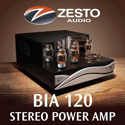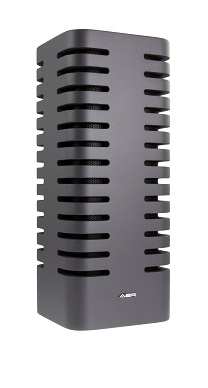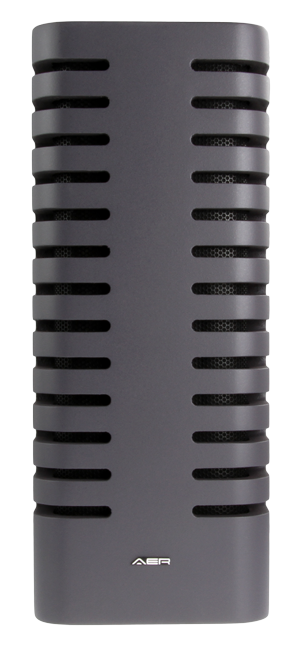|
|
You are reading the older HTML site
Positive Feedback ISSUE 72
aer Acoustic Energizer AE300 as reviewed by Pete Davey
It's nice to know that there is always room for improvement in one's audio reproduction system. Some really important things are overlooked, which is easy to do—most of the time you don't realize how much better it can be until you actually hear it. I'm sure everyone has been there, where you firmly believe you've got it all dialed in, and there isn't anything else that can be done. And then… you hear someone else's system, and you're floored. Things come up, "I never heard that instrument before!", or "Wow, that voice sounds clearer… more focused." I realize there are a lot of things that can factor into this experience, obviously, such as speakers, wires, etc., but one major important thing is room treatment. I can honestly say that I've not treated my room. Why am I holding back? I don't know it's not like I don't believe in it. I've heard some really nice systems with a true "before and after" of room treatment and there's always a clear difference. There are at times bad differences as well! Doing room treatment the wrong way is easy to do and it's important that you do not go overboard; like a real life equalizer. Electronic equalizers boost and cut amplitude of certain frequencies in the analog or digital domain. There will always be that environmental factor though; such as reverberations, vibrations, echoes, etc. that can really damage an audio listening experience. Well, what's interesting now is that room correction has been taken a step further, with active devices that are not tied into the audio system; rather they are external and autonomous. Devices such as the Stein Harmonizers have been talked about lately… ad nauseum. Why? Well, because they are rather different and yet so cool looking! And… well, they actually do have a positive effect on the sound difference. That last bit there is obviously the most important, to me anyway. They also double as a nice conversation piece! I have the most abnormal audio system of any of my friends—Apogee Scintilla speakers, Triangle Art Signature turntable—all very large and heavy / oddly shaped items. For me, I am a firm believe in the no compromise ideal where I do what it takes to have a visceral experience when it comes to listening to music. Plus, well, who doesn't like talking about their system when people see it for the first time! Explaining the history behind the speakers, or the weight behind the turntable… all important stuff here. Well, a few other manufacturers have entered the arena of active room treatment; one worth mentioning is the AER Acoustic Energizer, which is clearly stamped with the words "Euphoria Technology" label that they've carried out through a few of their product designs. I've got the unique opportunity to try both of these and the Stein products simultaneously and separately—but the intent of this article is not to compare them… though I thought it was worth mentioning as they are both very useful products albeit different in how they handle their tasks.
The Acoustic Energizer is an interesting design, both in aesthetics and use. Aesthetic wise, they are a rectangular cube and look like something out of Star Trek. Very nondescript with a subtle blinking LED on the top to inform you that they're on. On the bottom is a rocker switch to power them down, as well as a very unique power device called the Protonic Battery pack. I do find it fascinating myself, but the one thing that isn't fun is that they're not cheap to replace—at least you get about 3 years of life out of them. I hate to link to outside sources, but don't want to plagiarize this piece that clearly explains AER And PVC technology. All right, so if you read up on how to place these there are several options depending on the quantity of the units in your possession. I happen to have five of them, so there are some interesting options available to me. The skies the limit really, but with the five, I believe one results in some very interesting observable changes. Right now, I have one behind each speaker, one directly in front of me, and one behind each listening chair. This creates 4 triangles of the PVA effect. PVA is an interesting blend of polymers that are considered integral to the design of the unit and come natively from the power source. This explains why one cannot use normal batteries in the unit. I've really put these devices through the test; both for myself and with various friends where I was able to disable them and move them around. Every time I received positive reinforcement that they truly made an impact with regards to sound quality and atmosphere. A few albums worth noticing are… Paul Jebanasams's Rights – a sort of dark ambient album full of atmosphere, and life. Using the AER's while playing this album allowed me to immerse myself into the music and to help me forget what was going on outside of the audio force field.
Then, Otto A. Totland's Pino album. If you've not heard of this guy, it wouldn't surprise me—but he's quite popular in my scene of music. This is a very personal album, all piano based – and recorded beautifully. It really captures the emotion and rhythm. The microphone is placed in a unique area where you can also faintly hear the breathing of the pianist (Otto). This is more pronounced using the energizers.
Using this configuration of five devices placed such a way, yielded best results and generated almost a force-field shield of sonic enhancement. It was almost as if outside forces were left out, and the good ones left in. It should also be mentioned, that these are also great to use for home theater—unfortunately I wasn't able to try this in time for this review. Truly state of the art design and innovation and now I couldn't imagine my system without them. Thanks for reading. Pete Davey
AE300
|












